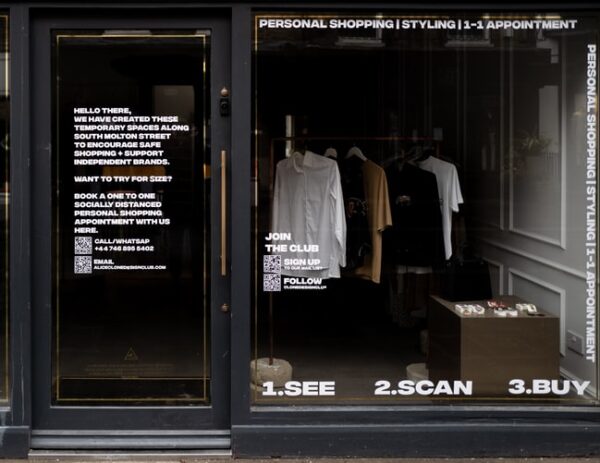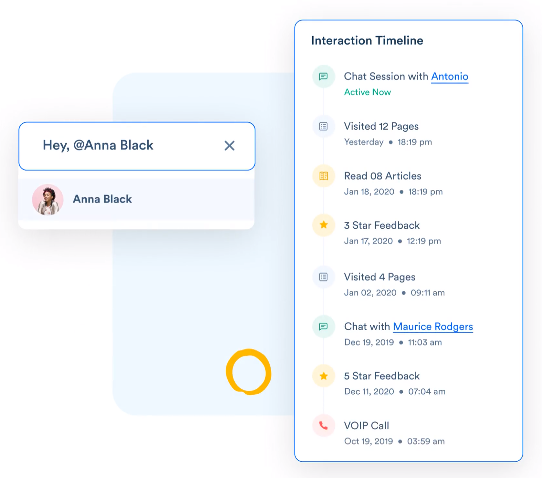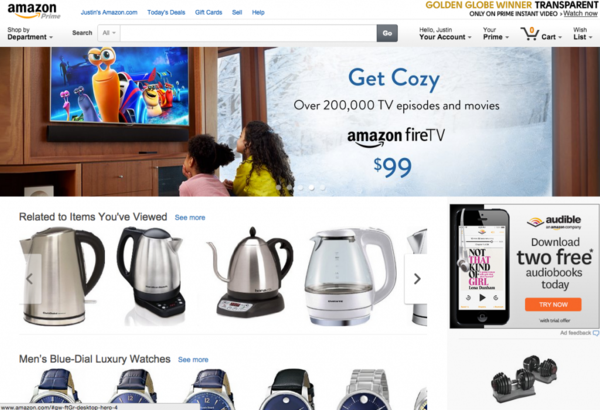We’re all well aware of the role omnichannel customer experience plays in today’s world and how it’s almost impossible to make a buck without offering it. But did you know that customer retention rates for omnichannel are 90% higher than any single channel?

Millennial customers when browsing online stores are always on the lookout for the simplest and the best experience, whether it’s navigation, browsing, checkout, shipping, or returns. The burden lies with the retail businesses to be able to fulfill these expectations. But creating such an experience can be a daunting task, especially if you don’t leverage the right technologies and tools while building your omnichannel retail strategy.
With that in mind, let’s dive deeper into the realm of omnichannel retail and identify the best tools out there that you can use to improve the way you conduct business.
What Is Omnichannel Retail (And Why You Should Care)?
The idea behind omnichannel retail is to bind together multiple avenues to create a more coalesced shopping experience as opposed to multichannel, which simply offers multiple instruments for customer interaction. With an omnichannel retail strategy in place, your customers can use any device and channel to seamlessly interact with your brand both online and offline.
With this approach, all your offline stores, social media campaigns, websites, telephonic helplines, emails, and so on merge, making the experience frictionless. And this has amazing business impacts. According to a report from Harvard Business Review, shoppers in an omnichannel ecosystem spend about 4% more in person and 10% more online as opposed to customers using only one channel.
Implementing an omnichannel approach also has a measurable impact on your sales, with you adding multiple digital touchpoints in your physical stores. Say, with the endless aisle technology, your customers can use their smartphones at a physical store to order products that are out-of-stock in the store. Similarly, say a customer never received the package they ordered online, the case could be handled by a smart chatbot or a live chat agent.
Live Chat Support
Live chat fits naturally in an omnichannel marketing strategy, and as many as 44% of online shoppers believe it’s an essential website feature. Since customers expect a more responsive shopping experience online, a live chat application directly improves the customer experience. But it has a few quantifiable benefits as well:
- Personalization: Customers expect personalized experiences at every touchpoint, a concept introduced by eCommerce behemoths like Amazon. They expect a brand to already know their preferences given their browsing and purchasing trends. While it’s largely implemented via marketing emails, live chat takes it one step further by roping in agents to connect with customers directly in the middle of their purchase process.
- Flexibility: Cobrowsing via live chat enables customer service agents to access a given customer’s screen to help them resolve issues in their purchasing journey.
- Economic: Traditional customer support is generally a tardy process and can burn a hole in your pocket if left unattended. Live chat, on the other hand, enables your staff to cater to multiple customers at any given time, thus reducing your cost over time.
- Positive Interactions: Any negative interaction with your customers can potentially lead to an end in your relationship with them. Live chat helps in keeping positive customer perception by allowing you to resolve your customer queries in real-time and is quicker than any other customer support channel.
Source: acquire.io/live-chat
A great live chat software solution can take care of your growing demands for improved customer support, sales, and service, thus helping you reform your omnichannel strategy.
Tools And Technological Trends Driving The Omnichannel Revolution
According to a study commissioned by Forrester, 50% of the shoppers expect to make a purchase online and make a pick up in-store, and at least 71% of customers think it’s essential for them to be able to view inventory information for in-store products. Given that, here we list some of the most groundbreaking technologies that are giving shape to the omnichannel retail and eCommerce space as we know it.
Internet of Things
The sheer number of IoT devices for consumers to interact with eCommerce channels only continues to grow. The total number of devices connected using IoT is expected to go beyond 125 billion in 2030, putting 15 connected devices into the hands of every consumer on average.
Products like smartphones, smart speakers, smartwatches, and other wearables have made it easy for businesses to adopt an omnichannel strategy. Through emerging IoT-based devices, businesses can present their customers with product content and personalized marketing with relevant notifications on relevant devices.
Through IoT solutions, omnichannel service providers can enhance their visibility and collect precise data with real-time validation. You can have access to connected systems across the globe and interact with them from wherever you are. Plus, we have smart offerings which are being used on audio and video-capable smart devices for taking preventive action and allowing customers to get a thorough insight into the product or service offered.
The IoT technology holds a lot of promise and potential, and along with it comes the challenge to process and analyze a mountain of data to gain actionable insights.
VR And AR
Virtual and Augmented Reality (VR/AR) are no longer the gimmicky and futuristic technologies that didn’t serve any practical purpose. Imagine going to a store, getting hold of a cart, putting on a pair of AR glasses, and making purchases through an AI program. With the Augmented Reality technology, your customers can use their smartphone camera to superimpose elements onto their visible physical surroundings digitally. Applications of this technology are being improved and are bridging the gap between physical and digital shopping experiences. Popular brands like Converse and IKEA are leading examples.
IKEA has done a wonderful job by empowering its customers to visualize how their products shall fit into their physical space simply via a smartphone. Similarly, Converse lets buyers use AR to virtually try on shoes (and share them on social media).
Through VR, on the other hand, your customers can shop virtually while relaxing at their homes. All they have to do is get a VR headset and select from intricately curated items based on their purchase history.
VR/AR brings unprecedented opportunities to omnichannel marketers and this has made it really simple to create well-informed and personalized customer experiences.
Marketing Automation
Automation is an important element in eCommerce as it allows retail businesses to tailor-fit the customer journey, all the while developing content designed to convert leads. Whenever buyers visit your online store and browse different products before leaving, your automated marketing program can use that data to trigger campaigns and promote relevant products and services to them.
For instance, MailChimp is a popular email service provider that has now grown into a full-blown automated marketing machine. With it, you can set up behavior-dependent triggers for your email marketing campaigns and create a single email or a series of emails using preset triggers like welcome messages, abandoned cart emails, etc.
Similarly, there are other tools that you can leverage to plan, coordinate, measure, and manage all your marketing campaigns across all channels.
Recommendation Engine
Amazon is perhaps the first thought that comes to our minds whenever we think of eCommerce, and that’s because it has succeeded in making customers coming back for more. And it’s all because of their solid recommendation engine.
Source: amazon.com
A recommendation engine leverages a set of predefined AI algorithms to predict and recommend products a buyer may like, given their previous interactions and set preferences and filters. Bring that into your omnichannel strategy, and you can up the ante by clubbing together data collected from online shops and in-store purchases.
It will not only personalize a customer’s experience with your brand but will also make them stay hooked for a very long time.
Final Thoughts
Introducing an omnichannel retail experience will put the customers at the center of your business strategy and offer them a frictionless shopping experience across all your offered channels. But implementing it can be a demanding task and can get extremely complex with all the data floating around.
The best way around this fix is to adopt modern technologies in your company’s vision and use tools that leverage them. With a small seed investment, you’ll forever change the way your customers look at your brand.


